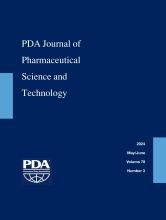Abstract
In this study, a computational fluid dynamics (CFD) model was developed to predict all relevant phenomena occurring during a moist heat sterilization process at a high level of temporal and spatial resolution. The developed CFD model was used to simulate the distribution of, for example, pressure, temperature, and residual air within a large-scale industrial steam autoclave (multiphase flow models), which was not published until now. Moreover, the thermodynamic behavior and distribution of fluids and temperatures inside the sterilization load were simulated and were verified with measurements. Based on the obtained sterilization temperature profiles in connection with the sterilization environment (e.g., non-condensable gases, natural convection), bacterial inactivation could be simulated. A complete moist heat sterilization process was simulated, including all relevant phenomena inside an autoclave chamber and a Peritoneal Dialysis Bag System (PDBS), which represents a complex sterilization item. To verify the simulation results, simulated pressures and temperatures were compared with measurement data for both the autoclave chamber and the PDBS. The results show that the simulated and measured values were in excellent accordance. By using the novel CFD model, the distribution of steam and residual air inside the autoclave chamber, as well as the natural convection inside the sterilization load, could be precisely predicted. To predict the inactivation of Geobacillus stearothermophilus inside different moist heat environments, the CFD model was extended with bacterial inactivation kinetics based on measurement data. The simulation results clearly indicate that our developed CFD model can be used to predict the inactivation kinetics of bacteria, depending on the sterilization temperature profile of the sterilization process as well as the moist heat sterilization environment, and to resolve the kinetics in time and space. Therefore, the developed CFD model represents a powerful tool that might be used in the future to predict, for example, “worst case” locations for any given autoclave and sterilization load or any other relevant process parameter, enabling the operator to develop an effective sterilization process.
- Computational Fluid Dynamics (CFD)
- Moist heat sterilization
- Autoclaving
- Inactivation of bacteria
- Geobacillus stearothermophilus
- Prediction of sterilization processes
- Numerical simulation
- Non-Condensable Gases (NCGs)
- © PDA, Inc. 2024
PDA members receive access to all articles published in the current year and previous volume year. Institutional subscribers received access to all content. Log in below to receive access to this article if you are either of these.
If you are neither or you are a PDA member trying to access an article outside of your membership license, then you must purchase access to this article (below). If you do not have a username or password for JPST, you will be required to create an account prior to purchasing.
Full issue PDFs are for PDA members only.
Note to pda.org users
The PDA and PDA bookstore websites (www.pda.org and www.pda.org/bookstore) are separate websites from the PDA JPST website. When you first join PDA, your initial UserID and Password are sent to HighWirePress to create your PDA JPST account. Subsequent UserrID and Password changes required at the PDA websites will not pass on to PDA JPST and vice versa. If you forget your PDA JPST UserID and/or Password, you can request help to retrieve UserID and reset Password below.






